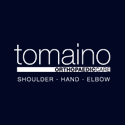Many individuals with tennis elbow are involved in work or recreational activities that require repetitive and vigorous use of the forearm muscles. Some patients develop tennis elbow without any specific recognizable activity leading to symptoms. Patients often complain of severe, burning pain on the outside part of the elbow. In most cases, the pain starts in a mild and slow fashion. It gradually worsens over weeks or months. The pain can be made worse by pressing on the outside part of the elbow or by gripping or lifting objects. Lifting even very light objects (such as a small book or a cup of coffee) can lead to significant discomfort. In more severe cases, pain can occur with simple motion of the elbow joint.
In most cases, nonoperative treatment should be tried before surgery for at least 3-6 months. Pain relief is the main goal. Treatment includes 1. activity modification, 2. the use of braces 3. stretching and strengthening(see videos on this page).
Newest PT research indicates that "eccentric" strengthening is more beneficial than "concentric", which means that the muscles should be lengthening during the exercises.
Additionally, though elbow straps (counterforce braces) are still helpful in decreasing lateral elbow pain during use/exercise, the use of a static wrist brace at night and during the day for a period of 4-6 weeks may be even more helpful, in terms of eradicating the condition. The application of ice to the outside part of the elbow is often helpful too, and you may need to take acetaminophen or an anti-inflammatory medication for pain relief. A cortisone shot is often very helpful at the 1st office visit as well.
Symptoms should improve significantly within 6-8 weeks. Nonoperative treatment is successful in approximately 85 percent to 90 percent of patients with tennis elbow. The newest nonoperative treatment involves injecting platelet rich plasma, derived from spinning down a small blood sample withdrawn right in the office. Special growth factors appear to have a healing effect. Outcomes are just starting to be reported, but the early reports appear favorable.
Surgery is considered only in patients who have incapacitating pain that has not responded to conservative treatment.The surgical procedure involves removing diseased tendon tissue. The procedure is an outpatient surgery and can be performed under regional anesthesia. Currently arthroscopic and open techniques result in equal outcomes, but the risks are higher with the former, thus I use a small incision. After surgery, the elbow is placed in a small brace. About one week later, the sutures and splint are removed. Then exercises are started to stretch the elbow and restore range of motion. Light, gradual strengthening exercises are started 6 weeks after surgery. Tennis elbow surgery is successful in approximately 85 percent of patients.




1 comment
mtomaino 3/6/11 at 12:22 pm
This past week I saw a patient who was very happy after tennis elbow surgery (see video attestation above entitled 7 month outcome...)
Each week I see approximately 5 new patients with tennis elbow and countless returning patients who are under my care-----as I monitor their response to therapy.
Please see the article under this section regarding therapy. I have included an instructional video as well as a recent article from JSES (Journal of Shoulder and Elbow Surgery) detailing the benefit of an Eccentric strengthening program.
The attestations above are shared to highlight the potential succes of surgery, however, my overwhelming recommendation is to exhaust nonoperative options since lateral elbow pain will typically improve with time. That having been said, there is a subset of patients for whom their elbow pain is functionally disabling. In such cases, it is reassuring to understand that surgical debridement can help.